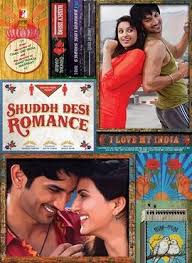Love lingers even in the spaces between life and death. That’s the premise of The In Between, a romantic drama that blends the supernatural with the deeply emotional. Directed by Arie Posin, the film stars Joey King and Kyle Allen, set in modern-day small-town America. The genre dances between romance, drama, and a hint of the paranormal, with a focus on the pain of loss and the possibility of connection beyond the grave. Joey portrays Tessa, a young woman grappling with heartbreak and tragedy, while Kyle plays her love interest, Skylar, in a film that takes viewers on an emotional rollercoaster.
The story centers around Tessa, who struggles with the loss of her boyfriend Skylar after a tragic accident. In her grief, she begins to believe that Skylar is trying to communicate with her from the afterlife. The film toggles between the past, recounting their passionate relationship, and the present, where Tessa wrestles with her grief and the eerie possibility that Skylar is not truly gone. As she navigates through memories of their love and the supernatural signs Skylar seems to be sending, Tessa’s journey becomes one of healing and acceptance. The film carefully unravels the depths of their connection while keeping viewers wondering whether Tessa’s experiences are real or just the product of her grief-stricken imagination.
Joey delivers a moving performance as Tessa, capturing the emotional weight of a young woman dealing with unimaginable loss. Her portrayal feels authentic, particularly in the more vulnerable moments where Tessa confronts her emotions head-on. Joey’s chemistry with Kyle is palpable, especially in the flashback sequences where their love story unfolds. The joy and light-heartedness of their early relationship contrast starkly with the heaviness of the present, and Joey skillfully navigates these shifts. Kyle, as Skylar, brings a warmth and charm that make his character instantly likable. Though his role primarily serves as a memory and spiritual guide for Tessa, Kyle’s presence feels integral to the film, grounding the more mystical elements with a relatable, human touch.
From a directorial standpoint, Arie Posin creates a visually immersive experience that blurs the lines between reality and the supernatural. The film often transitions seamlessly between Tessa’s memories and her current life, using subtle visual cues like lighting shifts or changes in color grading to indicate these time jumps. One standout example of this is a scene where Tessa is alone in a room, and the lighting dims just as she senses Skylar’s presence—this change enhances the film’s eerie tone without feeling forced. The special effects, while minimal, are effectively used to heighten the supernatural elements without overwhelming the emotional core of the film. For instance, Skylar’s ghostly appearances are understated, blending into Tessa’s surroundings in ways that feel natural rather than overtly fantastical.
The film’s musical score, composed by Dustin O’Halloran, plays a crucial role in amplifying the emotional beats. The score is haunting and melancholic, mirroring Tessa’s inner turmoil and the haunting nature of Skylar’s lingering presence. The music swells at key moments, such as when Tessa experiences a particularly emotional memory of Skylar, enhancing the impact of those scenes. In quieter moments, the score recedes into the background, allowing the actors’ performances to take center stage. The sound design also works in harmony with the film’s themes—whispers, distant echoes, and the soft rustle of leaves create a sense of unease, reminding the audience that the boundary between the living and the dead is thin.
Visually, the film captures both the beauty and isolation of its setting. Cinematographer Brendan Galvin does an excellent job of framing the small-town landscapes in a way that emphasizes Tessa’s loneliness. Wide shots of empty fields and quiet streets contrast with the warmth of the flashbacks, where Tessa and Skylar are often seen in more intimate, colorful spaces. The use of natural light adds to the film’s ethereal quality, particularly in scenes where Tessa feels Skylar’s presence—sunlight filtering through windows or casting long shadows creates a dreamlike atmosphere that suits the film’s tone.
Thematically, The In Between delves into grief, healing, and the human desire for closure. Tessa’s journey is as much about accepting loss as it is about reconnecting with Skylar. The film doesn’t shy away from showing how all-consuming grief can be, but it also offers hope—suggesting that love doesn’t simply disappear with death. The supernatural elements serve as a metaphor for Tessa’s struggle to move forward, and the film raises questions about how we cope with the loss of loved ones. Can we find peace in believing that they are still with us in some way, or does healing require letting go entirely? This emotional complexity gives the film a resonance beyond its romantic core, appealing to anyone who has experienced loss.
In terms of pacing, the film falters slightly in the middle, where some scenes feel repetitive as Tessa continues to encounter signs of Skylar. However, the emotional intensity of the performances and the gradual unraveling of their relationship keeps the story engaging. The editing effectively weaves together past and present, and though some of the flashbacks disrupt the narrative flow, they also provide crucial context for understanding Tessa’s emotional state. By the time the film reaches its climactic final act, the buildup of tension and emotion feels earned.
Overall, The In Between is a poignant exploration of love and loss, elevated by strong performances and thoughtful direction. While the supernatural elements may not appeal to everyone, the film’s emotional depth and exploration of grief are universally relatable. Joey’s standout performance, in particular, makes Tessa’s journey one that resonates long after the credits roll. For those looking for a heart-wrenching, reflective film about the spaces between life, death, and love, this movie is worth watching. It’s a story that lingers in your mind, much like the presence of a lost love, leaving you to ponder the question: how far would you go to hold on to someone you’ve lost?







